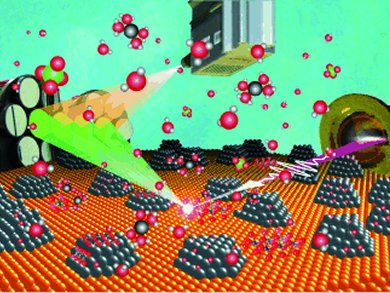This issue of Angewandte Chemie is dedicated to the 100th anniversary of the opening of the Fritz Haber Institute of the Max Planck Society (FHI) in Berlin. In an Essay, B. Friedrich et al. look at its history since the foundation as the Kaiser Wilhelm Institute for Physical Chemistry and Electrochemistry and its development through both dark days and golden years. M. Dunikowska and L. Turko reflect on the controversial career of the institute’s founding director Fritz Haber in another Essay.
In the first Review in this issue, H.-J. Freund et al. discuss CO oxidation as a prototypical reaction for heterogeneous processes. What microscopic concepts are used at the FHI in particular to investigate the interactions of simple molecules with well-defined materials, such as clusters, in the gas phase or solid interfaces? In a second Review, H. Schwarz discusses chemistry with methane. How do relativistic effects, two-state reactivity scenarios, and cluster-size and ligand effects alter the thermal activation of this seemingly simple molecule in gas-phase experiments and theory? G. A. Somorjai et al. contribute a Minireview on the determination of molecular surface structure, composition, and dynamics under reaction conditions at high pressures and at the solid-liquid interface. The highlights deal with hydrogen detection with cracked palladium films (A. Gurlo and D. R. Clarke) and CO2 capture at the gas-liquid interface (F. Maier).
In the Communications section, M.-Y. Han et al. report on the anisotropic growth of titania on gold nanostructures and its optimization for catalysis. S. Helveg et al. succeeded in imaging the atomic edge structure of industrial-style MoS2 nanocatalysts using single-atom sensitive electron microscopy. R. Kapral et al. present a nanomotor powered by a chemical wave. A. Nilsson et al. show how, driven by the low surface energy of Au, a Pt fuel cell catalyst is removed from the surface of the Au support (see picture).


